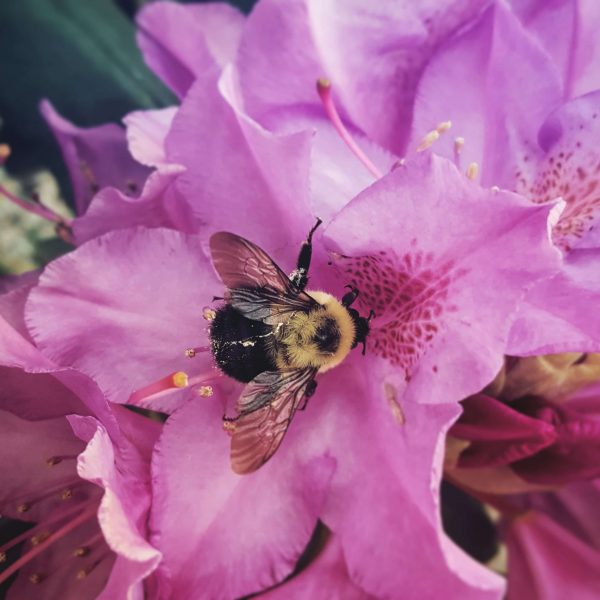By R. Wayne Mezitt
I’m gratified and quite taken that the issue of pollinators has recently so effectively caught the attention of the public. Decade after decade, dedicated members of the nursery industry have searched, formulated and tried countless approaches to raise the awareness and importance of horticulture in the minds of the public. Over the 50+ years I’ve been involved with this industry, the pollinator issue is one of the few topics to prove so universally relevant, and that’s encouraging.
Given how fundamentally critical the world’s food and fiber sources are to human existence, it should be obvious that people are concerned about pollinators. According to Wikipedia, “at least 80% of our world’s crop species require pollination to set seed. An estimated one out of every three bites of food comes to us through the work of animal pollinators.” And “declines in the health and population of pollinators pose what could be a significant threat to the integrity of biodiversity, to global food webs, and to human health.”
Pollinator “animals” include so many species like bees, butterflies, birds, bats, moths, flies and beetles, all of which are in some way threatened by human activities. Pollinator Partnership, the worldwide organization dedicated exclusively to the protection and promotion of pollinators and their ecosystems, cites “disturbing evidence that pollinating animals have suffered from loss of habitat, chemical misuse, introduced and invasive plant and animal species, and diseases and parasites.” Who hasn’t been aware of the “sudden hive collapse” disaster reported on the media in recent years, of major concern to crops and farmers in all regions?
Fortunately, it’s easy for each of us individually to make a difference, protecting pollinators and enhancing their wellbeing in our daily activities. We encourage beneficial insects to better thrive by limiting our use of chemical pesticides and herbicides, instead applying organic principles and techniques for our gardens and yards. Mulch around our plants and use manual or mechanical maintenance methods–mowing, cutting, pulling, girdling, or tilling–to control weeds and intrusive vegetation. Some pollinators use plants as their overwintering sites, so consider that at fall-garden-cleanup time.
Homeowners typically tend to plan their home plantings for peak springtime bloom. And who can argue that spring is the most opulent time for garden color. But utilizing trees, shrubs and plants that spread their flowering features across the entire year encourages more pollinators, all the while enhancing the value and appeal of our yards and gardens. Summer, autumn, and even the “shoulder seasons” of earliest spring and pre-winter can offer exciting flowering opportunities that attract pollinators and add weeks to the enjoyment of our yard.
Native plants are favored by native insects and animals, so using native plants is important when conditions are appropriate. But many pollinators have been introduced from other areas of the world, so using so-called “exotic” (nonnative) plants is beneficial too. The more pollinators we encourage, the more productive and healthy our gardens become.
As summer turns to autumn, here are some suggestions for plants that bloom near the end of the growing season in the northeast, are particularly favored by pollinators and are often underutilized in our gardens:
- Woody trees and shrubs: Hydrangea, bluebeard (Caryopteris), summersweet (Clethra), rose-of-Sharon (Hibiscus), seven-son-flower (Heptacodium), harlequin glorybower (Clerodendron), witch-hazel (Hamamelis) and many rose cultivars;
- Herbaceous plants: goldenrod (Solidago), Joe-Pye-weed (Eupatorium), Russian sage (Perovskia), Japanese anemone, blue mist (Caryopteris), tickseed (Coreopsis), balloon flower (Platycodon), snakeroot (Cimicifuga), autumn crocus (Colchicum) and numerous species and cultivars of aster, chrysanthemum, sedum and colorful annuals.
Many resources are available for more information at local garden centers, botanic/horticultural organizations and online. For the northeastern USA, a particularly relevant publication is Selecting Plants for Pollinators, clearly explaining the importance of pollinators and how critical their health is to maintain the way of life to which we’re accustomed.







